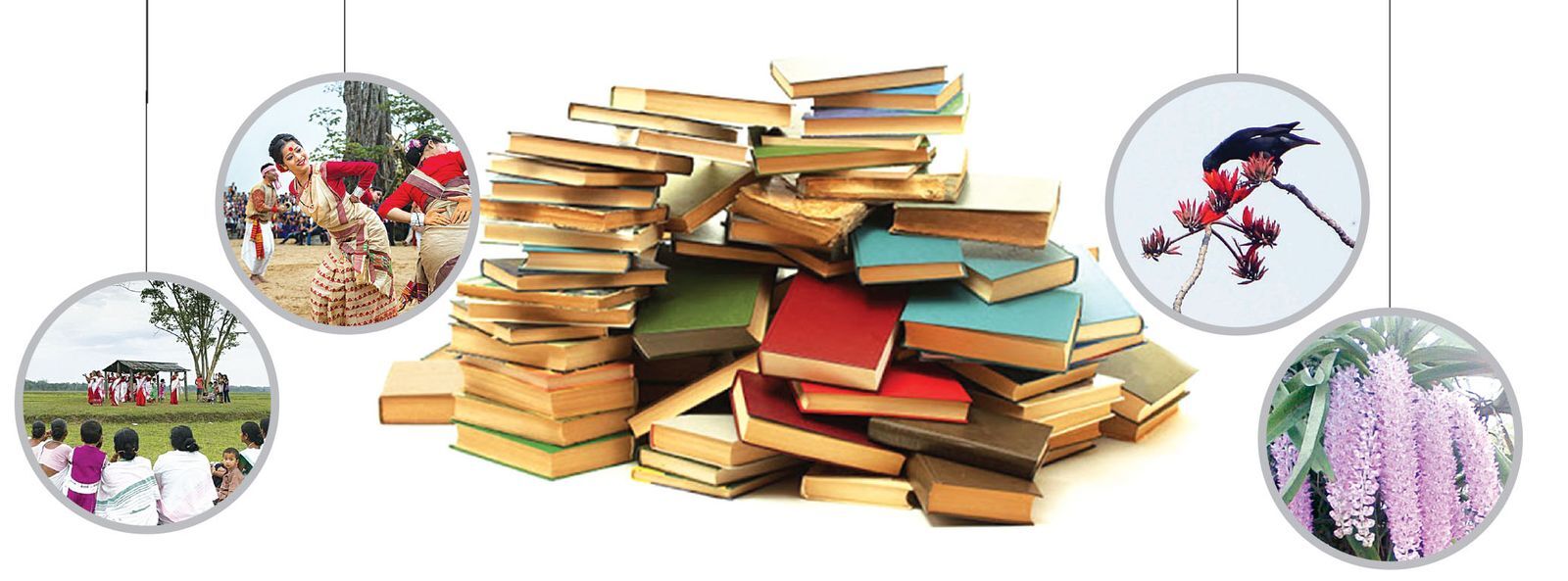
LITERATURE - Partha Pratim Hazarika

Bihu makes its presence felt in a number of Assamese literary works.
Bihu — especially Rongali or Bohag Bihu, being the raison d’être of the indigenous Assamese, it is obvious that various literary works have included Bihu and the ethos within it at different times of the development of Assamese literature over the years. From the time such stalwarts of Assamese society like Kamalakanta Bhattacharya, Gunabhiram Barua and Ratneswar Mahanta ridiculed and rejected Bihu, labelling Bihu songs and dances as sensuous practices followed by the members of the lower-most social strata of Assamese society, till the time the architect of modern Assam — Radha Govinda Baruah, brought it on to the stage at the Latasil Bihutoli in 1952, Bihu as a subject of debate and discussion has come a long way.
Even then, this writer found it hard to lay his hands upon purposefully documented works on this subject, i.e., Bihu in Assamese literature. Mentions are scattered in various writings, but it has not been documented in a comprehensive way even in the vernacular.

Hemchandra Goswami (1872-1928) wrote a poem titled Bordoisila, while Sahityarathi Lakshminath Bezbaroa (1864-1938) wrote a song titled Bihu (included in the compilation Kadamkoli), and also a poem, Basanta. Mitradev Mahanta’s (1894-1983) Bihu Adoroni is a write-up which dwelt on Bihu.
Several novels in Assamese have mentions of Bohag Bihu in their narrations. Leela Gogoi’s well-read novel Noi Boi Jai has mentions of Bihu, while Atulananda Goswami in his famous novel Naamgharia describes a Bihu mela. Pora Gaont Pohila Bohag, the iconic novel based on the communal violence of 1983 by Syed Abdul Malik, has a melancholic description of Bihu and the sentiments associated with it.
Many short stories in Assamese have covered Bihu in its various forms. Nakul Chandra Bhuyan’s short story Bihu ne Biya, Lakshminath Phukan’s Bihu Xombhaxon, Malik’s Praan Puwar Pisot are some examples. However, it is in Mahim Bora’s stories (Abur) that the changing form of Bihu and the related sentiments are clearly documented. Pranabjyoti Deka’s story Bihuoti Chorai, Lakshmi Nandan Bora’s Xokha Damodar, Apurba Saikia’s Bhram, among others, have described Bihu in its various social elements related to the greater Assamese society. It was till the Ramdhenu Era that Bihu in all forms and shapes found a vibrant existence in Assamese literary works of different writers. The exuberance with which Bihu, especially Bohag Bihu, was described or covered in literary works till that time has ceased to exist in today’s works. The sheer commercialisation of Bihu in all its three forms has robbed it of the beauty and happiness once associated with its celebrations across the society.
Bihu has also been dealt with in Assamese poetry. One of the most underrated Assamese poets, who had great potential to be at par with poets like Nilamani Phukan, was Prafulla Bhuyan. Bhuyan’s poem Bihu celebrated the peaceful, slow but lively rural life during Bihu:
“Xoru xoru gaonbur praanere uposi gol
Aru taar xoru xoru praan bur
Anandat phool hol – Bohagor phool
Pathar mukhor hol
Bihu naam, toka aru pepar matot…”
Famous artiste from Bengal, Hemanga Biswas, who spearheaded the IPTA Movement in the late Sixties – accompanying maestro Dr. Bhupen Hazarika, wrote a poem, Bordoisila, which compares the seasonal thunderstorm of Assam with the war of Vietnam. His other poem, Maghai Ozar Dhol, is a direct reference to the dhol maestro Maghai Oza, who was picked up by Dr. Hazarika and whose magic on the dhol has now been a part of Assamese cultural lore.
Devakanta Baruah’s poem Bihur Pepa is actually not about the pepa (a hornpipe Bihu instrument) itself; it deals with the emotional upheavals brought about by the sound of the pepa in the minds of youngsters. Bezbaroa’s Bihu, a lyrical poem, is significant on many counts. Though Bihu is considered the lifeline of the Assamese society, and essays on Bihu are numerous in number, Assamese poetry cannot boast a significant contribution in this connection. Bezbaroa was successful in keeping the ethos of Bihu intact in this poem; it has succeeded in showcasing Bihu’s position in the folk culture and society of Assam. Sahityarathi’s Padumkoli compilation has a poem — Bihuwan, that deals with the subject of Bihuwan — a phulam gamosa presented as an honour to an individual during Bohag Bihu. (Bihu aru Adhunik Axomiya Kobita; Ananda Barmudoi)
Jajneswar Sarmar Kobitawali includes two poems – Bihumora Bor and Bihur Botor – the first describes a banyan tree around which the youth celebrated Bihu over the years, and the second deals with the nuances of tribal life.
Binanda Chandra Barua’s poem Jorhator Atoliya Gaon (included in his book Joydhwani) narrates the existential threats to Bihu posed by the urban-centric civilisation. Thaneswar Hazarika’s Bihuwan is another mentionable poem on Bihu that describes the hopes and aspirations of a couple, expressed through the presentation of a Bihuwan. Navakanta Barua’s poem Bihur Botorot Burha Manuh (from the Dolongor Taamighora collection) speaks of the Bihu celebrations in towns, of Spring and one’s advancing age –
“Afuloti Bihuwatir khojor chandat xunu
Mur dhila baratir tejor dholat boja
Atitor dhin daon daon.”
Poets like Jiban Narah (Atithi) and Saurabh Saikia have profusely used Bihu in its totality, and also as a metaphor in their works.
Though writings on Bihu in Assamese language are numerous, there is a need to scientifically document Bihu in Assamese literature. This write-up is not comprehensive and inclusive at all, but a humble effort on our part, aimed at seeking further serious researches in future.

